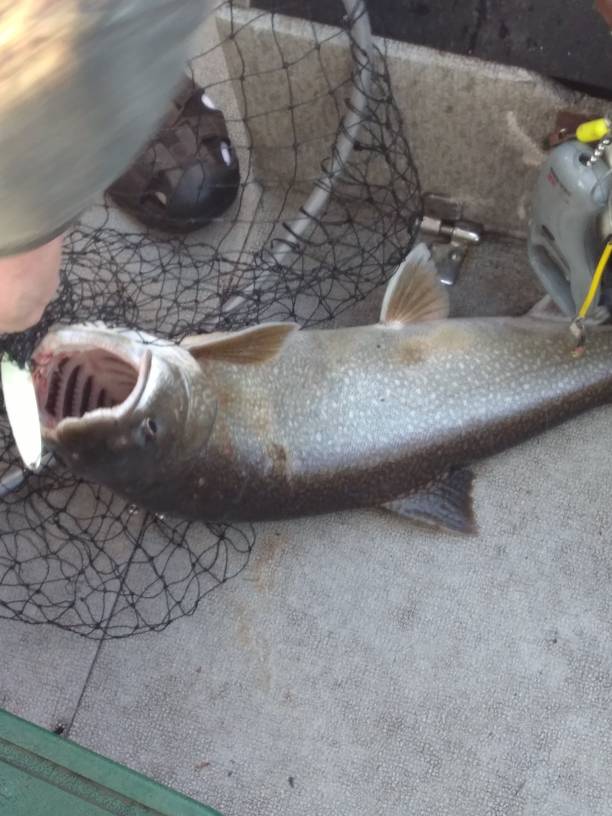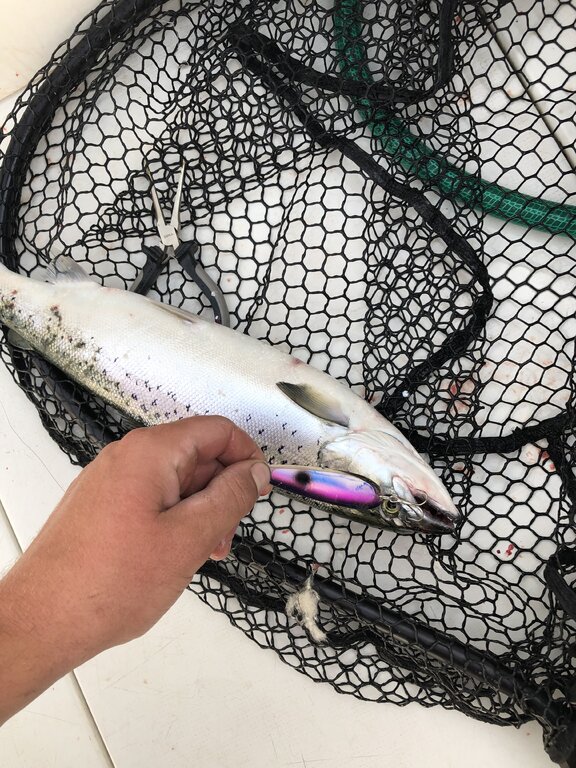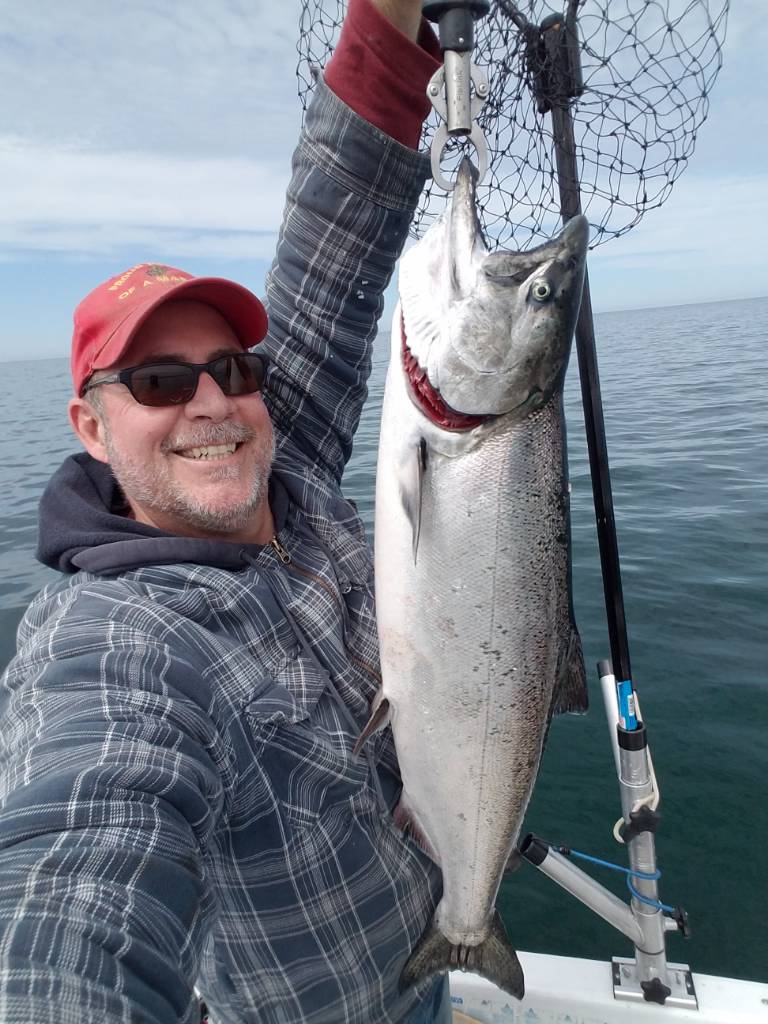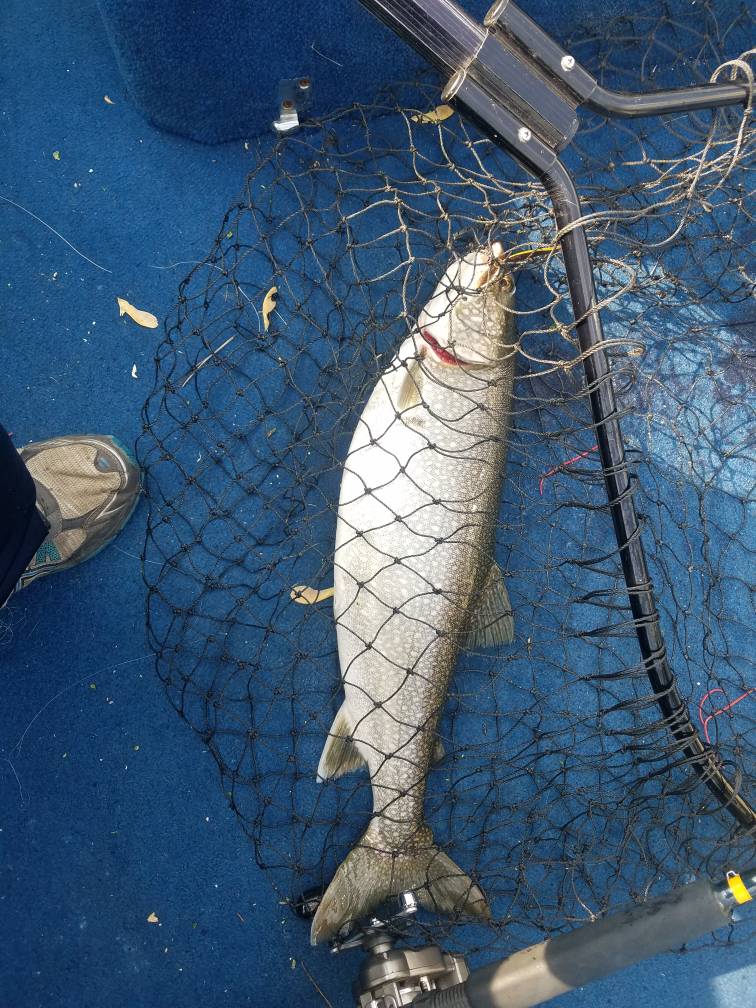-
Posts
13,873 -
Joined
-
Last visited
Everything posted by Sk8man
-
x2 on Whaler1 and Gamblers statements.
-
The only time the lampreys are vulnerable is in the amocoete (larval) stage so treatment timing is crucial to reducing their numbers. The timing and weather conditions can also relate to long term effectiveness as flooding on breeder streams allows the spawning adults to get over barriers as well. It takes several years after treatment to see major results or treatment impact in reducing their numbers as there are always various year class adults in the lake
-
Brian gave you some real good advice. Something I would add is that long coppers take a long time to reel in even with the right gear ratio reels.This can be significant if you have inexperienced or young folks reeling them in. Additionally it can be hard on the fish if you intend to release them. You can also get increased depth on shorter dedicated coppers such as 200's and 300's by adding snap weights to them shortening the distance in reeling them in. You can get an estimate of how much weight does what to them by attaching a Fishhawk TD setup at a given speed say 2.0 mph. Notice that I said "estimate" because that is just what it is as is running them clean because there are a lot of factors that govern how deep or shallow they actually run (e.g. variations in boat speed, underwater currents. what you have as a lure, use of attractors before the lure etc. and the TD itself) but it does give a better idea than just guessing.
-
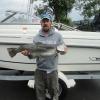
for sale : usa Tackle for sale
Sk8man replied to tin cup's topic in Classifieds - Buy, Sell, Trade or Rent
-
-
I agree Ray that the lampreys are a big problem on Seneca. Previous high water conditions in the areas where they spawn allowing them to spawn and get back out into the lake in years past are a part of the current situation. Many of these lampreys are good sized and they can live for 15 or more years so past problems are part of what is plaguing us now. You are also right about the treatment conditions having great impact as time goes on. The TFM needs to be applied at the right time and under the right weather/wind conditions and they aren't always "optimal" by any stretch of the imagination. It is reminiscent of the mid to late seventies when you could fish most of the day without seeing or catching a trout. There are however some other negative things at work in the lake too and it is my hunch that it is a combination of problems that has led to the current state of affairs. The lake (as with Keuka) has been undergoing composition changes that have degraded the water. As you mention farm run-off into the lake (manure/methane, phosphorus, and other chemicals some of which are 'bio-limiting" factors for photosynthesis and weed growth, some which affect the PH level of the water too. It has always been surprising to me that the DEC hasn't required berms of some sort at the edges of farmland and vineyards at the lake edges to reduce run-off. Another disturbing thing is the run-off of lawn pesticides and fertilizers from the highly increased residential development along the lake now. The algae blooms are probably a result of all these nutrients washing into the lake and congregating in certain areas. It has been rumored that the electric plant at Dresden may be cycling massive amounts of lake water without filter screens and if true that may be having an impact on fish numbers as well. The supposedly inadvertent dumping of raw sewage into the lake via the Keuka Outlet certainly hasn't helped lake quality either. Then...we get around to the Zebra, Quagga mussels and waterfleas which have further compounded matters by their filtering activity and zooplankton predation. We always look for a "silver bullet" or single simple answer to problems, but some situations such as these are more complicated and more difficult to fully identify even before figuring out any potential solutions. In the case of the zebras there is a potential chemical solution but it is not possible or feasible . because of the size of these bodies of water and related costs among other things. The out of balance alewife population occurring now doesn't help matters short terms either. Just my take on it....I'm not a scientist either
-
The problems with Keuka seem to be a little more complicated than just laker imbalance and tanking of the alewife population. Both Keuka and Seneca have complex problems. The overpopulation of lake trout in Keuka sure didn't help things but the nature and character of the lake is changing. It is becoming much more nutrient rich with some of the wrong things. Same is true of Seneca. Keuka has for many years had a problem with chemicals from the vineyards and people's lawns washing into the lake and creating problems. The steep banks in most areas along the periphery of the lake don't help either. The introduction of Zebra and Quagga mussels into the lake more than likely sped up and increased the extent of the problems with increased water clarity out to greater depths. The type of grasses present has also changed with the increase of sunlight and photosynthesis penetrating deeper and the combination of increased sunlight substituting the the slimy green grass stuff replacing much of the native grass beds. To compound things the water fleas eat a lot of the zooplankton and phytoplankton that the small baitfish feed on and they don't survive well in that environment. The lake trout have out-competed the rainbows, browns and Atlantics because they are hardier and more diverse in their feeding habits (witness the predaton of perch and panfish now taking place). Two of the streams I used to fish for rainbows (Guyanoga and Cold Brook) are now in much different shape ( absence of previous "holes" in Cold brook, and presence of manure etc. in Guyanoga) these days so spawning there has probably taken a hit too. In short, the issue of walleye vs. trout/salmon may be a moot issue until some of these other things are properly addressed (if that is realistically possible).
-
-

Down riggers and summer steelhead
Sk8man replied to steelfire's topic in Questions About Trout & Salmon Trolling?
Free ranging sliders 6-8 ft in length, good quality solid ring ball bearing swivel with medium length orange, red, or pink spoon run in the prop wash. Periodically abruptly increase boat speed, when changing out lures pop the downrigger and let the spoon flutter Cohos or steelies will love it. -
-
-
No experience with it so no guidance offered but you have my sympathy Keith...it sucks.
-

Hughes 6/18
Sk8man replied to Frogger's topic in New York Fishing Reports - Lake Ontario (South Shore)
-
x2 on Nick https://www.reelstoriesfishingcharters.com/
-
The take away from all this is that there is no single "optimal" setting. The setting you use for each one depends on where the fish seem to be located, the approximate depth you wish to achieve in relation to where the fish are how many dipsies you intend to run, and just how your boat is set up to run what you intend to put out there. It also matters what you are running behind the dipsies. Like most of the things encountered in trolling it can be as complicated as you wish to make it The most important thing is to keep effective separation of the dipsies when running more than one per side.
-
A you mention it makes a difference with boat speed, and current and a host of other factors ( eg.diameter of copper) but an estimate for the braided copper at about 2 mph is 22 ft per 100 ft out so 11 for the 50 , 22 for 100, 44 for the 200, 88 for the 400 etc. You may wish to calculate your own chart a little more reliably by using a Fishhawwk TD for each setup and compare with the "expected" depths I mentioned. I have no idea about the weighted steel as I haven't used it.
-
-

Last day till LOC
Sk8man replied to HB2's topic in New York Fishing Reports - Lake Ontario (South Shore)
A couple of things come to mind" One is I stopped using Stren line years ago because of breakoffs even with the mono for whatever reason. Two is that not every package of line is equal. Sometimes line sits around in a store in direct sunlight heating up the package perhaps and deteriorating the contents over time maybe? Using high quality fluoro such as Seaguar and doing as suggested with wetting the line while cinching down and careful tying your knots should yield good results if your reel drag is set properly. For many many years we fished kings with 12 pound test line without break-offs on Lake O prior to the fleas. -
I'll just throw this out there as the actual physical speed may not really be all that important,or at least not as important as some folks may think. First, what is most important with any of these devices is repeatability from the standpoint of if something worked at that particular point or speed on the indicator you desire to return to it hoping for more success. Although calibration may be a consideration between say two different instruments being run at the same time and it ,may make it easier on your brain to process two things saying the same thing, even having the two instruments in synchronization calibration-wise may not end up with the same physical reading on your display because when turning even slightly in current the probes will often run at slightly different speeds according to the side of the boat they are on.Two boats having their units synchronized may give different readings when run from different boats side by side just because of hull design variations or downrigger wire diameter differences so one persons data may not be relevant to the other boat.. The whole fascination with physical accuracy may be a red herring in this case as it is relative speed on whichever device you have faith in that is the most important variable.Having two devices running at the same time may not be any more advantageous as being able to rely on one device you have faith in. Returning to that reading is critical regardless of the instrument being used. Surface speed is probably always going to be quite different than that at the probe and the deeper you go the more it may vary as it true also with the degree of underwater current encountered, and it can perhaps vary according to braid on one rigger vs. wire on another and between two different probe designs creating different amounts of resistance in the water or two different rigger weights. Slight differences in the freedom of movement of each impeller on the probe can create a reading difference on the display (e.g. especially if a little grass or debris is on it) The reason I am saying this stuff is directed at newbies believing that all these "gizmos" are the "cats azz" and are infallible and "bulletproof" answers to success and the concept of "more is better"
-

Canandaigua Canandaigua Lake Trout Derby 2019
Sk8man replied to Sk8man's topic in Finger Lakes Discussion
-

Canandaigua Canandaigua Lake Trout Derby 2019
Sk8man replied to Sk8man's topic in Finger Lakes Discussion
-
-
-
Thanks for the heads up Mark. A lot of crazy and dangerous stuff goes on out on these lakes so maybe folks should think about the safety benefits and the fact that these regulations are based on logic and common sense which not everyone has out there. I saw a couple things just today on Canandaigua that could have resulted in perssonal injury and more (e.g. cigar boat showing off at the ramp, kids sitting on the bow of the boat going full blast with no PFD). Many times fishing at night on Honeoye I have witnessed numerous boats traveling at high speed without lights whooping and hollering and clinking bottles and cans We should be supporting the police in their efforts rather than complaining about logical boating requirements. The state police aren't Cuomo's money grabbing cronies they are just folks doing their jobs. As fisherpersons out there we have the responsibility to serve as good examples for the boating public by adhering to the regs and it doesn't mean we are wimps for doing so since most of us are more than casual boaters and should know enough to have the required equipment on our boats.It isn't some unreasonable requirement. There are people out there that have no business driving a boat and they present a danger to all of us.


